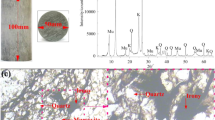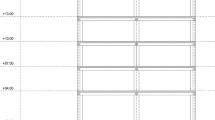Abstract
The failure probability and the reliability index have been determined for a pipe submitted to internal pressure, exhibiting a corrosion defect, embedded in a soil with a ground reaction, and submitted to displacement due to seismic activity. Results are obtained by computing the condition of failure: strain demand higher than strain resistance which is typically the Strain Based Design (SBD) basis. From the probabilistic point of view, this condition results as the product of the two probability distributions, demand and resistance. An analytical method is proposed to compute the common area between the strain demand and resistance distribution and then get the probability of failure. The strain demand is assumed to follow a power-law distribution and the strain resistance, a Normal one. The strain demand is computed assuming that the probability density of seism follows a Gutenberg –Richter distribution law as it is found in the south of France. This simple method is also used to predict the failure probability of different reference periods or seismic zone. It is also used to examine the influence of the coefficient of variation of the strain resistance distribution when using vintage pipe steels.











Similar content being viewed by others
Abbreviations
- a :
-
Parameter of the Gutenberg –Richter distribution law
- b :
-
Parameter of the Gutenberg –Richter distribution law
- d :
-
Defect depth
- c :
-
Defect semi-axis width
- e :
-
Defect semi-axis length
- f s :
-
Safety factor
- f s,det :
-
Deterministic safety factor
- f s,prob :
-
Probabilistic safety factor
- B :
-
Material constant for the triaxiality correction
- C :
-
Material constant for the triaxiality correction
- M :
-
Seism amplitude
- X ef :
-
Effective distance
- \(\beta \) :
-
Stress triaxiality
- δ :
-
Material constant for the Lode correction
- \({\varepsilon }_{d}\) :
-
Strain demand
- \({\varepsilon }_{D}\) :
-
Design strain
- \({\varepsilon }_{R}\) :
-
Strain resistance
- \({\varepsilon }_{ d ,l}\) :
-
Local strain demand
- \({\varepsilon }_{ R ,l}\) :
-
Local strain resistance
- \({\epsilon }_{f}\) :
-
Elongation at failure in tension
- \({\epsilon }_{f,s}\) :
-
Elongation at failure in shear
- \({\epsilon }_{R }^{0}\) :
-
Reference strain resistance
- \(\gamma \) :
-
Reliability index
- \({\theta }_{l}\) :
-
Lode angle
- λ and η :
-
Parameter of the strain demand distribution
- \( \mu _{f} \;{\text{and}}\;\mu _{d} \) :
-
Means for resistance and demand strain distribution
- \( \sigma _{R} \;{\text{and}}\;\sigma _{d} \) :
-
Standard deviation for resistance and demand strain distribution
- Δ :
-
Local seismic displacement
References
G. Pluvinage, “Pipe Defect Assessment Made by Strain Based Design Science & Technologies: Oil and Oil Products Pipeline Transportation” Vol 9, N°1, p67–75. (2019)
T. Kelil, M. Amara, M.H. Meliani, B.G.N. Muthanna, G. Pluvinage, Assessment of API X65 Steel Pipe Puffiness by a Strain Based Design (SBD) Approach Under Bi-Axial Loading. Eng. Failure Anal. 104, 578–588 (2019)
DNV 2000, DNV-OS-F101 Submarine Pipeline Systems, det Norske Veritas, (2000)
CSA Z662 Oil and Gas Pipeline Systems, Canadian Standards Association (1999)
ASME B31.8, Gas Transmission and Distribution Piping Systems. American Society of Mechanical Engineers. New York, New York, (2012)
API 1104, Welding of Pipelines and Related Facilities, Nineteenth Edition, American Petroleum Institute, (1999)
API RP 1111 “Design, Construction, Operation and Maintenance of Offshore Hydrocarbon Pipelines (Limit State Design)”, American Petroleum Institute, (1998)
D. Pluvinage, V. Sapounov, Prévision Statistique du Comportement des matériaux». Editorr CEPADUES, (in French) (2006)
Yu.G. Matvienko, The Simplified Approach for Estimating Probabilistic Safety Factors in Fracture Mechanics. Eng. Failure Anal. 117, 104814 (2020)
T. Wierzbicki, L. Xue, Ductile Fracture Initiation and Propagation Modelling Using Damage Plasticity Theory. Eng. Fract. Mech. 75, 3276–3293 (2008)
EN 1998–4 Eurocode 8: Design and Dimensioning of Structures for Their Resistance to Earthquakes - Part 4: Silos, Tanks and Pipelines (P06–034:2007–03, NA: 2008–01), (1998).
B. Gutenberg, C.F. Richter, Magnitude and Energy of Earthquakes. Ann. Geofis. 9, 1–15 (1956)
J.R. Rice, D.M. Tracey, On the Ductile. in Triaxial Stress Fields. J Mech Phys Solids. 26, 163–186 (1969)
H. Gouair, Z. Azari, Cicliov D et Pluvinage.G. ” Ténacité d’un matériau ductile ; un modèle basé sur la distribution locale critique de la déformation”. Matériaux et Techniques , N° 12 ,p 7–12 ,(in French). (1995)
F.A. Mac Clintock, A Criterion for Ductile Fracture by the Growth of Holes. J. Appl. Mech. 35, p363 (1968)
J.W. Hancock, A.C. Mac Kenzie, On the Mechanisms of Ductile Failure in High-Strength Steels”. J. Mech. Phys. of Solids. 24, 47–169 (1976)
A. Dhiab, H. Gouair, Z. Azari, G. Pluvinage, “Dynamic Ductile Failure of xc18 Steel: Statistical Aspects” Problems of Strength, Special. Publication. 96, 38–46 (1996)
J.R. Griffith, Owen. D.R.J, J. Mech. Phys. Solid,19,p 419. (1972)
G. Pluvinage, Fatigue and Fracture emanating from notches Editor Kluwer, (in French). , (2003)
BRGM Evaluation probabilistique de l’aléa sismique à l’échelle du territoire national - Etape 3- EPAS3, BRGM/RP-50532-FR. Novembre, (In French). (1997)
Author information
Authors and Affiliations
Corresponding author
Additional information
Publisher's Note
Springer Nature remains neutral with regard to jurisdictional claims in published maps and institutional affiliations.
Rights and permissions
About this article
Cite this article
Jean-Pierre, A.K., Guy, P. & Julien, C. A Simple Strain-Based Method to Compute the Probability of Failure of a Pipe Submitted to Seismic Displacement. J Fail. Anal. and Preven. 22, 1637–1645 (2022). https://doi.org/10.1007/s11668-022-01454-1
Received:
Revised:
Accepted:
Published:
Issue Date:
DOI: https://doi.org/10.1007/s11668-022-01454-1




